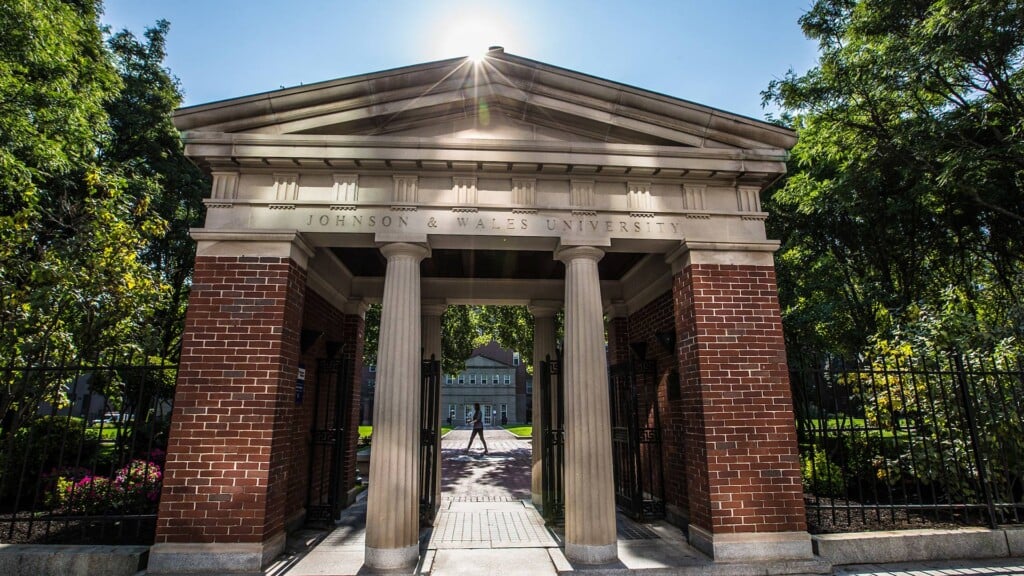New Rosecliff Exhibit Unveils Connections with a Faraway Locale
During the Gilded Age, an ongoing fascination with the Far East spurred many of Newport’s well-to-do to fill their drawing rooms with Chinese art.

The Chinese Tea House at Marble House was designed by Richard and Joseph Howland Hunt. Photography courtesy of the Preservation Society of Newport County.
Nicole Williams already knew what she wanted to tackle for her first project when she became curator of collections for the Preservation Society of Newport County in January 2022. The art historian — who graduated with a doctorate in the history of art from Yale — had previously worked on an exhibit about American art and internationalism in the Gilded Age but found little about Newport’s Chinese American community during that era.

Detail of a standing screen owned by the King family, with embroidery by Chinese artist Li Ailian. Photography courtesy of the Preservation Society of Newport County.
“I couldn’t find anything written about the Chinese community in Gilded Age Newport, but I knew that at the same time, Chinese immigrants were moving to Northeastern cities and forming Chinatowns in cities like New York and Boston,” she says.
The resulting exhibit, “The Celestial City: Newport and China” — on display at Rosecliff through Feb. 11 — celebrates the ties between two seemingly far-flung places. During the Gilded Age, an ongoing fascination with the Far East spurred many of Newport’s well-to-do to fill their drawing rooms with Chinese art, even as immigrants newly arrived from China and other countries filled the streets outside.
In the city’s most obvious example, Alva Vanderbilt Belmont commissioned the Chinese Tea House at Marble House in 1912; her architects were inspired by the temples of southern China. Williams’ research reveals the structure’s close ties with Belmont’s suffragette leanings, a fight she shared with Chinese American women activists. The exhibit also highlights Newport’s Chinese American businesses of the late 1800s and early 1900s and gives an unvarnished look at the China trade and the difficulties faced by early Chinese immigrants.

This c. 1900 postcard from the collection of Daniel P. Titus shows Lee Yun Laundry, bottom left, at 329 Thames St. Photography courtesy of the Preservation Society of Newport County.

A photograph of Grace Yip Typond c. 1910 from the collection of her great-grandson, Douglas J. Chu. Photography courtesy of the Preservation Society of Newport County.
“We were lucky to secure a lot of loans, including important objects that have never been publicly exhibited before,” she says.
While many of the items were once owned by wealthy, white families, Williams wanted to ensure the voices of Chinese Americans were represented. Among her favorite artifacts is a teapot that belonged to Grace Yip Typond, one of the Chinese American suffragists who fought alongside Belmont in New York. Typond’s great-grandson, Douglas J. Chu, attended the exhibit’s opening in August. Also present was Terrence Lee, whose grandfather, Gum Lee, owned one of the city’s first Chinese laundry businesses.
“So much of the focus has been on Newport’s white, wealthy families and the precious things they collected. I really wanted to argue that a teapot that belonged to Grace Yip Typond was just as valuable,” she says.
The exhibit contributes to knowledge of the city’s residents beyond Bellevue Avenue, something Williams hopes to continue in future research.
“Keith Stokes [historian and Preservation Society board member] has said that Newport’s history should be inspirational and aspirational, and that’s the feeling I want to leave visitors with.” newportmansions.org





























